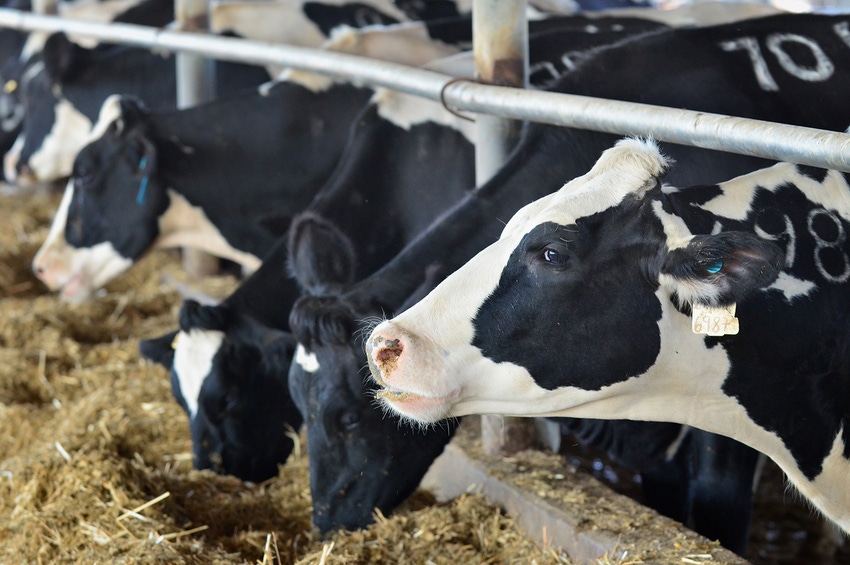Seasonal changes to dairy cattle rations may lead to lower butterfat tests during warmer seasons.
June 13, 2018

Often, dairy cattle rations can change seasonally, and it’s common for producers to experience lower butterfat tests and higher numbers of butterfat inversions during the warmer seasons, according to Lallemand Animal Nutrition.
These fluctuations are often due to variable starch digestibility of corn silage or high-moisture shell corn (HMSC), Lallemand said. Changes in the ration are needed to account for this variability — otherwise, herds are at risk for sub-acute ruminal acidosis (SARA).
“Especially this time of year — but really no matter what the season — SARA is an important problem for producers to be on guard against,” said Tony Hall, technical services-ruminant with Lallemand Animal Nutrition. “In addition to reduced milk components, producers can also see lowered feed intake or loose manure. These are all common signs that SARA may be affecting a herd.”
A cow is defined as experiencing SARA when her rumen pH is below 5.8 for a combined total of three hours or more over a 24-hour period. In this acidotic state, the rumen isn’t optimized to make the best use of any ration. Any operation using corn silage or HMSC should watch for seasonal swings in production, Hall said.
After six to eight months in storage, the fermentation process continues to break down starch-protein structures in the corn silage or HMSC, Lallemand pointed out. Increased amounts of rumen-digestible starch and higher rates of digestibility combine to push cows into SARA. In addition, feeding behaviors and silage stability can change.
“All these factors make this season a particularly hard time for dairy producers to keep performance consistent,” Hall noted. “The number-one way to fight back against SARA is to monitor critical areas regularly and make appropriate ration changes.”
Hall recommended that dairy producers:
1. Monitor dry matter (DM) content in ensiled forages and moist feedstuffs every week;
2. Test for total starch content, starch digestibility and starch degradation rate on ensiled corn silage and HMSC every month;
3. Monitor the total mixed ration (TMR) for both neutral detergent fiber (NDF) and physically effective-NDF content;
4. Make sure the total oil and polyunsaturated fatty acid content is not excessive;
5. Ensure sufficient salt and buffer content;
6. Confirm the dietary cation-anion difference value is adequately positive;
7. Ensure particle size distribution of the TMR is as expected, and that the ration is dispersed evenly along the feed bunk and regularly pushed up, to help address changes in feeding behavior, and
8. Include a rumen-specific active dry yeast probiotic in the ration to help maximize rumen function.
“Helping dairy cattle maintain a more consistent rumen pH can optimize rumen function — avoiding SARA and making the best use of any ration,” Hall said. “No matter what the season, all herds can benefit from better rumen efficiency and greater productivity.”
You May Also Like



